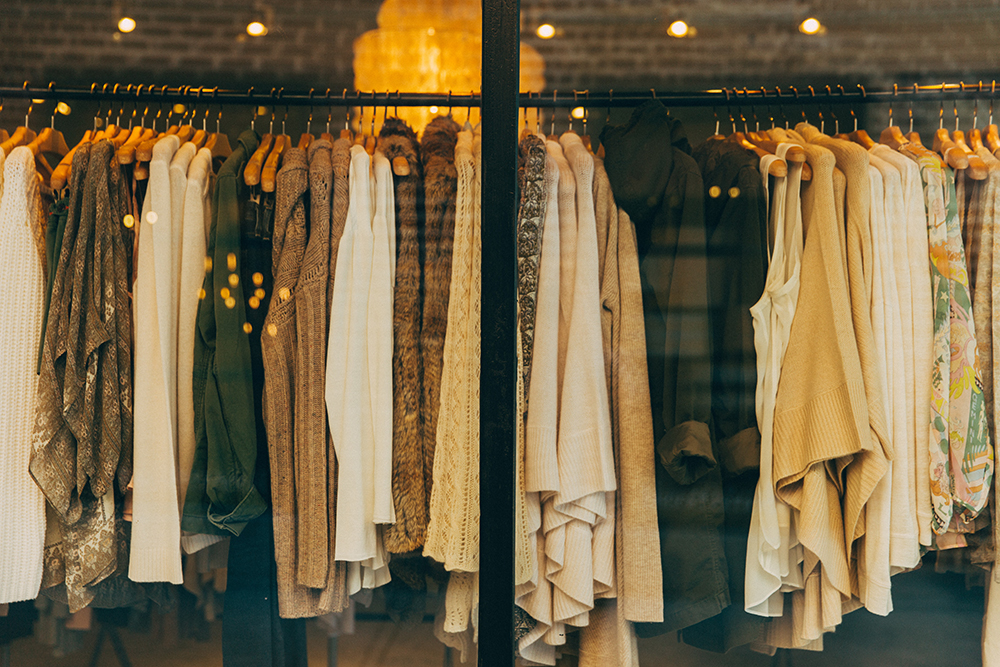
The emergence of 2019-nCoV has left Canadians worried about another SARS-like disease, but public-health officials say the risk here is low. Heres a compendium of The Globes coverage of what the experts recommend for the public.
Relax, but dont lecture others about how they should relax
So far, all but a few cases of 2019-nCoV (also called the novel coronavirus, or the Wuhan virus) are in Chinas Hubei province, where it originated last month. Outside China, there are only a handful of cases, mostly people whove just returned from affected cities. While the World Health Organization considers it an emergency within China and says a vigilant global response is needed to stop it from spreading, it hasnt been officially designated an international emergency. Canadas health agencies say the risk to Canadians is small. More people die of the flu each year in Canada than have died so far in China.
Being concerned and empathetic about this outbreak is appropriate many Chinese people have died of the virus, and theres a lot we still dont know about how it works but the experts say panic is not warranted or helpful. Then again, other experts say telling people not to panic isnt helpful either, because they generally dont in crisis situations. Here, Globe and Mail health columnist André Picard looks at some tips from risk-communications researcher Peter Sandman on how to assuage peoples fears of unknown threats like the Wuhan virus, such as being clear and consistent and acknowledging the things we dont know yet.
Story continues below advertisement
Get your facts from official sources
Dr. Theresa Tam, Canada’s chief public health officer, speaks at an Ottawa news conference about the coronavirus alongside federal Health Minister Patty Hajdu.
Justin Tang/The Canadian Press
Rumours and deliberate misinformation can run rampant during a disease outbreak, and they can be just as dangerous to public health. Stick to the facts as communicated by public-health agencies or medical professionals. Here are the coronavirus information portals for some of the key federal, provincial and international disease-control agencies. If you have any questions, try the Public Health Agency of Canadas information line at 1-833-784-4397.
When you see information about the coronavirus on social media, take the time to check whether it adds up with what these sources and credible medical experts are saying. Be wary of rumours or deliberate misinformation, and think twice before amplifying either. If you need pointers on how to spot hoaxes or fake-news websites, try this media literacy quiz The Globe prepared in 2017.
Stay clean, but be realistic
Customers trying to decide which N95 mask to buy at Rotblott’s Discount Warehouse in Toronto.
Fred Lum/The Globe and Mail
Manufacturers of surgical and respirator masks have been doing brisk business in Canada since the Chinese outbreak began, but leading public-health officials question whether that spreads panic without effectively preventing disease. We never recommend wearing a mask in public, Ontario chief medical officer David Williams says, because many people dont use them properly: Reaching underneath them to touch your face, for instance, spreads germs. N95 respirator masks (so named because theyre designed to stop 95 per cent of small particles from reaching the nose and mouth) only work if they fit properly, which they wont for children or people with facial hair.
The single most effective way to stop the spread of disease is actually much more low-tech: Washing your hands often, and properly. Learn the World Health Organization’s recommended method in the video below.
Travel smart
Chinas government has restricted travel to the most-affected areas an unprecendented lockdown affecting tens of millions in the city of Wuhan and its environs. Major airports around the world, including Toronto, Montreal and Vancouver, are screening new arrivals. So its hard to reach a coronavirus hot zone even if you wanted to, and the chances of contracting the disease while travelling abroad are slim. For instance, when Canada discovered its first presumptive coronavirus cases a couple who flew from Guangzhou to Toronto health officials were only worried about passengers seated within a two-metre radius of them, and not others on the plane.
Still, good hygiene always helps to make travel safer for everyone. Here’s what Ontario and B.C.’s public-health agencies advise travellers to do:
- Places to avoid: If youre in a place known to have coronavirus cases, stay away from places where live animals are sold or slaughtered, like farms or animal markets.
- Wash your hands often: See the video above for pointers on how to do this effectively.
- Tell someone if youre unwell while travelling: If you notice symptoms before or during your return to Canada, tell a flight attendant or border-service officer so they can assess whether you need medical attention.
- Tell someone if youre unwell after travelling: If you notice symptoms once youre home, check with your doctor or at a hospital and tell them about your travel history. Thats what the first Canadian patients did, and health officials say it was the right thing because they could be isolated quickly.
Know the symptoms
Those infected with the Wuhan virus have reported sore throats and coughing, fever and difficulty breathing. Only in extreme cases does pneumonia set in, and only health-care workers and patients with pre-existing medical conditions are most at risk of serious harm or death.
Story continues below advertisement
Most people who have reported symptoms and been screened for the coronavirus in Canada dont have it. And if you do have it, chances are youll know soon enough to act in time: One initial study in the Lancet medical journal found the virus produced symptoms within four days of exposure, which is faster than the 10 days seen in SARS.
Timeline of coronavirus onset
Median time from onset of symptoms*
Onset of symptoms
Hospital admission
Intensive care unit admission
0
1
2
3
4
5
6
7
8
9
10
11
Number of days
Shortness of breath
Acute respiratory disease syndrome
Shenzhen-based family visit infected relatives in Wuhan and return with illness
S
First sign of symptoms*
H
Attended hospital for investigation
Shenzhen
Wuhan
Shenzhen
Healthy family in Shenzhen
Visit infected family in Wuhan
Family return to Shenzhen infected
Dec. 26
Jan. 1
5
10
15
Patient 1: Mother
S
H
2: Father
S
H
3: Daughter
S
H
4: Son-in-law
S
H
5: Grandchild
H
6: Grandchild
H
Did not travel to Wuhan
7: Mother of patient 4
H
S
*Including fever (in 98% of patients), cough (75%), myalgia or fatigue (44%), and others.
THE GLOBE AND MAIL, SOURCE: THE LANCET
Timeline of coronavirus onset
Median time from onset of symptoms*
Hospital admission
Intensive care unit admission
Onset of symptoms
0
1
2
3
4
5
6
7
8
9
10
11
Number of days
Shortness of breath
Acute respiratory disease syndrome
Shenzhen-based family visit infected relatives in Wuhan and return with illness
S
First sign of symptoms*
H
Attended hospital for investigation
Shenzhen
Wuhan
Shenzhen
Healthy family in Shenzhen
Visit infected family in Wuhan
Family return to Shenzhen infected
Dec. 26
Jan. 1
5
10
15
Patient 1: Mother
S
H
2: Father
S
H
3: Daughter
S
H
4: Son-in-law
S
H
5: Grandchild
H
6: Grandchild
H
Did not travel to Wuhan
7: Mother of patient 4
H
S
*Including fever (in 98% of patients), cough (75%), myalgia or fatigue (44%), and others.
THE GLOBE AND MAIL, SOURCE: THE LANCET
Timeline of coronavirus onset
Median time from onset of symptoms*
Onset of symptoms
Hospital admission
Intensive care unit admission
0
1
2
3
4
5
6
7
8
9
10
11
Number of days
Shortness of breath
Acute respiratory disease syndrome
Shenzhen-based family visit infected relatives in Wuhan and return with illness
S
H
First sign of symptoms*
Attended hospital for investigation
Shenzhen
Wuhan
Shenzhen
Healthy family in Shenzhen
Visit infected family in Wuhan
Family return to Shenzhen infected
Dec. 26
Jan. 1
5
10
15
Patient 1: Mother
S
H
2: Father
S
H
3: Daughter
S
H
4: Son-in-law
S
H
5: Grandchild
H
H
6: Grandchild
Did not travel to Wuhan
7: Mother of patient 4
H
S
*Including fever (in 98% of patients), cough (75%), myalgia or fatigue (44%), and others.
THE GLOBE AND MAIL, SOURCE: THE LANCET
Stay healthy
As with other coronaviruses like the common cold, theres no specific treatment for the Wuhan virus, but there are steps you can take to recover more quickly:
- Stay home from work or school
- Get lots of rest
- Drink lots of fluids
- Try a hot shower or humidifier to ease your sore throat
Be kind to one another
Toronto, 2003: Prime minister Jean Chretien has tea with members of Toronto’s Chinese community to help allay fears of the then-ongoing SARS outbreak, which had a chilling effect on Chinese restaurants’ business.
Fred Lum/ Globe and Mail
For Asian-Canadian communities, the new coronavirus has brought back bad memories of the racism they experienced during the 2003 SARS outbreak. That had serious consequences: In the 2004 report Yellow Peril Revisited, respondents cited SARS panic as factors in the loss of their jobs or rental housing, described bullying at work and school, and pointed to a steep loss in business at Chinese restaurants. And today, theres an additional threat that didnt exist in the era of SARS: Social media amplifying misinformation and abuse.
Needless to say, racism is not helpful in combatting public-health threats. Thats the message a Toronto-area school board tried to send in a note to parents this month, after a petition urged them to keep students home if their family had travelled to China recently. In her report on that, Globe reporter Dakshana Bascaramurty also heard from Kevin Huang, executive director of the Vancouver-based Hua Foundation for racial equity, who said Canadians should try to see outbreak through an empathetic and global lens:
Removing our Western exceptionalism and humanizing [Chinese people] allows us to think about a more global concerted effort to try and contain this virus.
More reading
On the science
New coronavirus tests scientists ability to tangle with an evolutionary trickster
Commentary
André Picard: What Ontario didnt learn from SARS: During a public-health crisis, we need good information, clearly communicated
Tony Clement: The coronavirus is now in Canada, but thanks to the lessons of SARS we are better prepared
Compiled by Globe staff
With reports from Kelly Grant, Carly Weeks, Dakshana Bascaramurty and Evan Annett
Story continues below advertisement
Our Morning Update and Evening Update newsletters are written by Globe editors, giving you a concise summary of the days most important headlines. Sign up today.





More Stories
The South Australian government has promised to deliver the “biggest hit of economic adrenalin in South Australian history” in Tuesday’s budget.
Boris Johnson will proceed with his controversial Brexit bill despite US president-elect Joe Biden having previously warned the UK over the draft legislation.
Singapore-based Nektar.ai, a productivity platform for sales teams, has raised $2.15 million in seed funding. Founded earlier this year, Nektar has been working in stealth mode with five companies, and has plans for an early adopter release before a public la…